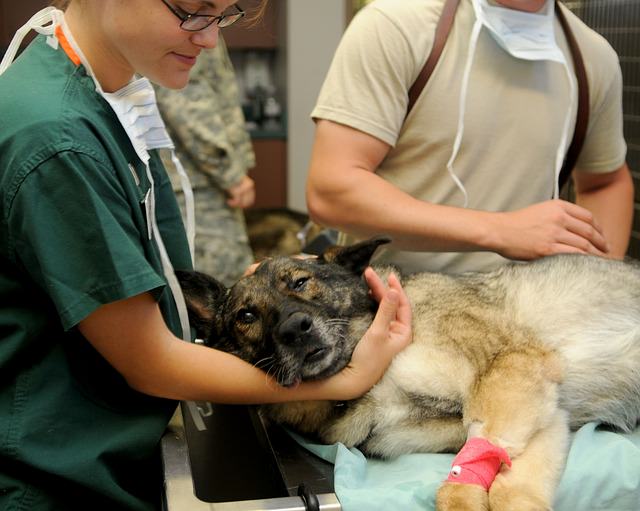You can bet that during your dog’s lifetime, he/she will need some type of surgery. Whether is to be spayed or neutered or it is to remove a skin tumor, anesthesia is a part of our world today and as a society, we are fortunate that anesthesia exists. Otherwise, many of us would not even be here to read this. Without surgical intervention, many of my patients would have been lost.
The definition of anesthesia is a temporary loss of feeling or awareness. In modern medicine, we use drugs to cause loss of consciousness for the purpose of performing procedures. Over time, the safety and effectiveness of anesthesia has improved dramatically. In 1846, a dentist by the name of William T.G Morton, along with a surgeon named John Collins Warren, performed the first surgical procedure with anesthesia. Dr. Morton had been on a quest to find something better than nitrous oxide gas (which is still used in human dentistry today). Before that time, the prospect of surgery was a haunting one.

Anesthetic options have increased since that time and today, we have a variety of options that we can tailor to the individual’s needs and the requirements of the procedure. Most (if not all) of the anesthetic drugs used in human medicine are available for use in veterinary medicine and protocols can be surprisingly similar (with some species specific exceptions).
Anesthetic mishaps make headlines. Everyone seems to know someone who tells a tale of losing a pet (or a human acquaintance) under anesthesia, but a recent study among human beings anesthetized over a period of 8 years in a Brazilian hospital found that although some patients died during surgery (16 deaths in 10,000), they were all related to patient factors, like preexisting disease 1. None of the deaths were related to actual anesthesia, so the likelihood that your normal healthy dog would not recover from anesthesia is very slim. A 2012 study on anesthetic deaths among dogs and cats found that anesthetic death among healthy pets is rare at only 0.12% (3/2602).2

The risk of anesthetic death can be further reduced by careful monitoring of patients with monitoring equipment, like a pulse oximeter and EKG. With that being said, you should make sure that your veterinarian will be attending the anesthetic induction and that you feel comfortable with his/her competence to choose and safely administer the drugs. It is within your right as a pet owner to ask questions about anesthesia monitoring and recovery.
Talk with your veterinarian. Let the veterinary team help you weigh the risks versus the benefits. They will make you aware of any particular risks. Do not believe what you hear or read. Only your own vet knows your dog and can advise you. If your dog needs to have a procedure under anesthesia to address something painful (like dental disease) or potentially save his life, you should not let fear stop you from providing the care that he/she needs.
Do you love dogs? Want to learn more? Follow me on Facebook by clicking here.
- Pignaton, Wangles et al. “Perioperative and Anesthesia-Related Mortality: An 8-Year Observational Survey From a Tertiary Teaching Hospital.” Ed. Pasquale De Negri.Medicine 2 (2016): e2208. PMC. Web. 4 Feb. 2017.
- Bille C, Auvigne V, Libermann S, Bomassi E, Durieux P, Rattez E.Risk of anaesthetic mortality in dogs and cats: an observational cohort study of 3546 cases. Vet Anaesth Analg. 2012 Jan;39(1):59-68. doi: 10.1111/j.1467-2995.2011.00686.x. PubMed PMID: 22151876.
